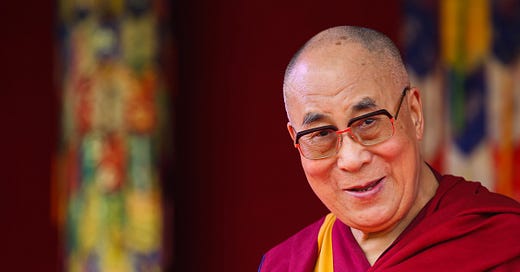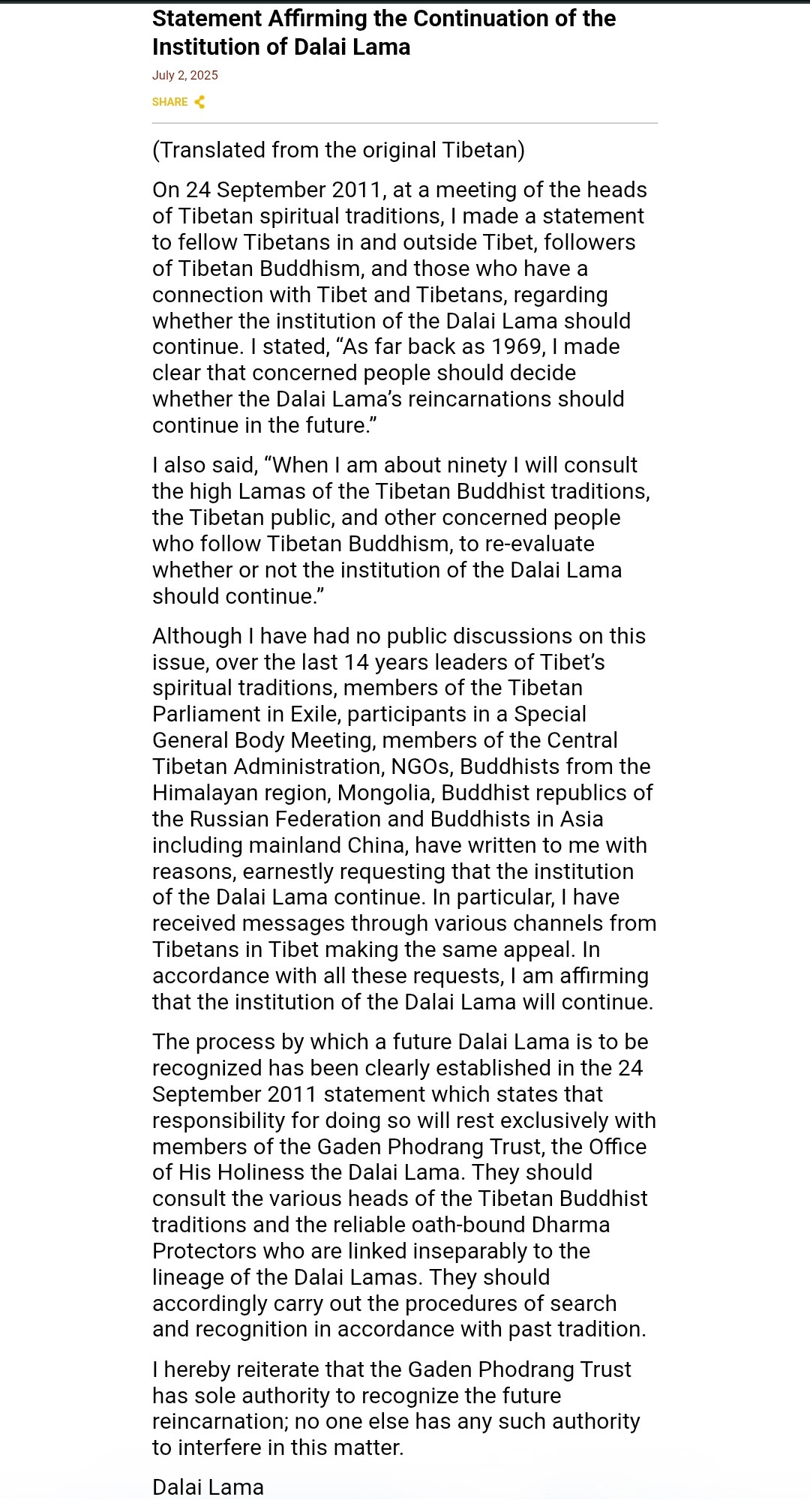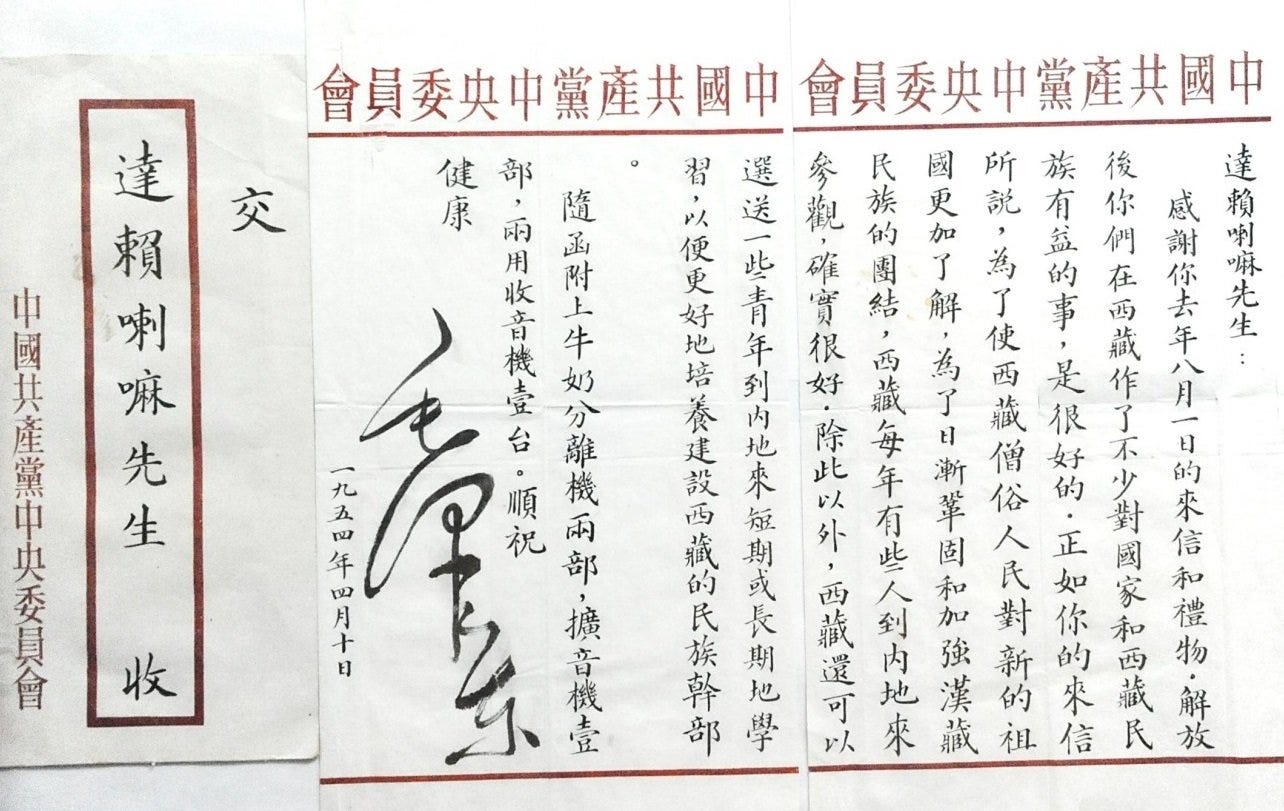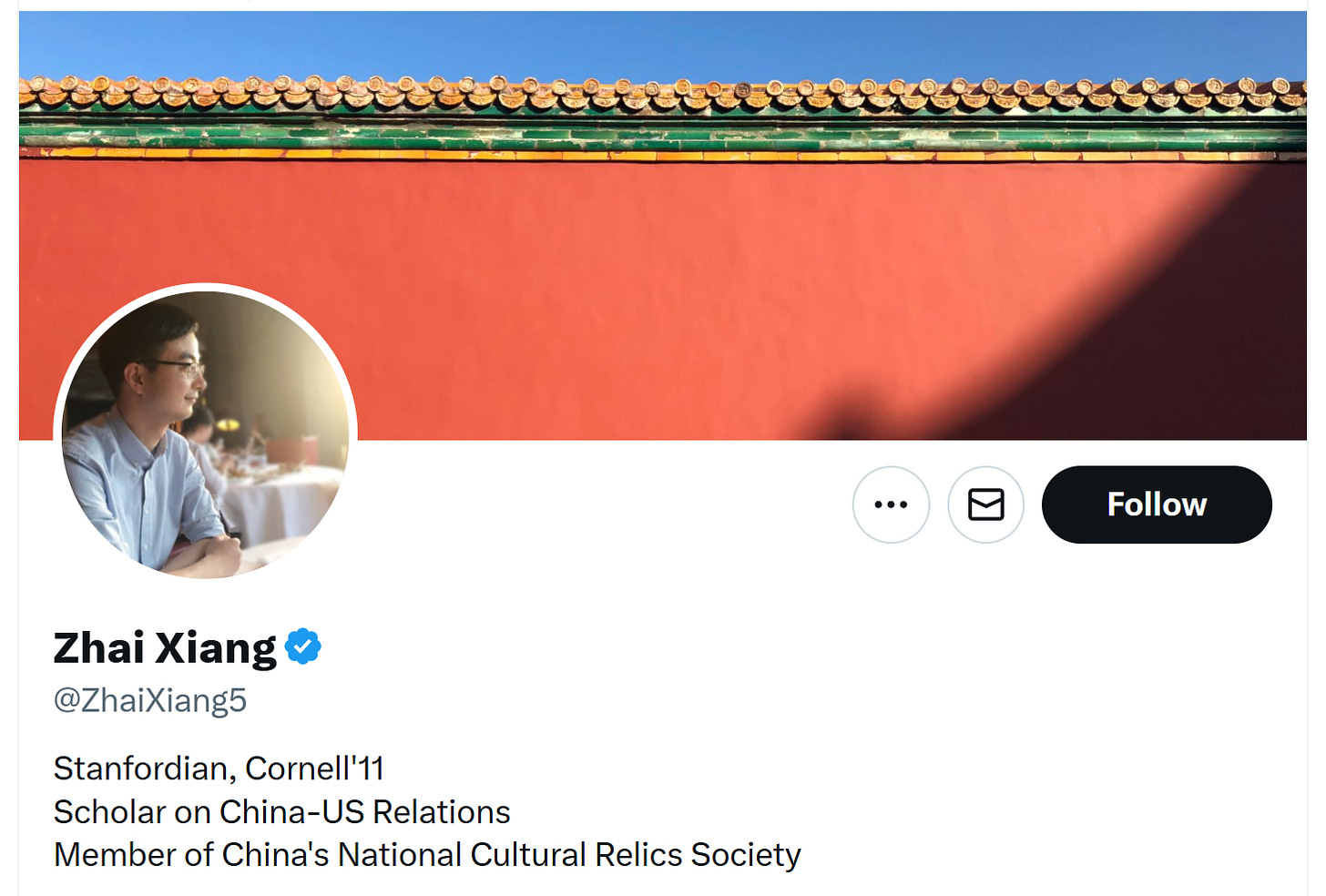As the 14th Dalai Lama turns 90 years old on July 6, 2025, there has been a public discussion on his succession. The Dalai Lama argued that his reincarnation should be determined by the Gaden Phodrang Trust, a tax-exempt Swiss foundation incorporated in Zurich, Switzerland, while Beijing insists on maintaining the traditional centuries-old Golden Urn selection process in accordance with the laws of China’s central government that was developed since the Yuan Dynasty (1271-1368).
China maintains that the future 15th Dalai Lama must also be determined under the "Measures on the Management of the Reincarnation of Living Buddhas of Tibetan Buddhism" of the People’s Republic of China (PRC).
The Chinese government reiterated the official process and its position:
🔹The practice of Living Buddha reincarnation has continued over 700 years, and has formed rigorous religious rituals and historical conventions.
🔹The reincarnation of the Dalai Lama, the Panchen Erdeni and other grand Living Buddhas must go through the Golden Urn lottery procedure, and selected candidates would be subject to approval by the central government of China.
🔹The 14th Dalai Lama himself was searched for in strict accordance with religious rituals and historical conventions after the passing of the 13th Dalai Lama, and enthroned after being granted exemption from the lottery with the then central government's approval.
🔹The government of the PRC implements a policy of freedom of religious belief. It protects the tradition of reincarnation of Living Buddhas in accordance with the law. The reincarnation of the Dalai Lama must follow the process that consists of search and identification in China, lot-drawing from the Golden Urn, and central government approval, and comply with religious rituals and historical conventions as well as Chinese laws and regulations.
Below are responses originally posted on X on July 2, 2025 from Zhai Xiang, a Chinese scholar and historian.
Responding to the current Dalai Lama and his supporters:
Since the time of the 5th Dalai Lama, every incarnation of the Dalai Lama has required formal recognition by the central government. This includes even your own predecessor, who once openly promoted separatist activities. Despite that history, your succession as the 14th Dalai Lama was still approved through central government procedures in 1940, if you may still remember.
This is institutional order. And respectfully, you do not have the personal authority to unilaterally determine your next life.
Who decides the reincarnation of a senior Tibetan lama-the Buddha, the monasteries, or the state?
In recent years, and even in recent days, the 14th Dalai Lama has made a series of striking public statements about his next life, including the possibility of being reborn as a woman, a bee, or not at all. These claims have stirred global media attention-but do they align with centuries of religious tradition and precedent?
I am a historian on China and a scholar of international relations. 15 years ago, while studying at Cornell, I devoted an entire semester in a 4000-level seminar to the study of Xizang, or Tibet. In 2018, I traveled to Xizang in person-from Lhasa to Shigatse, and onward to the Everest Base Camp-conducting field research on Tibetan religion, history, and contemporary society, although my physical condition is not well-suited to low-oxygen environments. Over the years, I have also maintained contact and constructive dialogue with many of China's leading experts on Tibetan studies.
As a scholar, I seek to continue in my tradition of objective, evidence-based inquiry. My aim is to provide a clear and well-documented explanation of what the reincarnated "Living Buddha" system in Tibetan Buddhism actually entails, and whether the Dalai Lama's poetic, progressive claims align with doctrinal teachings and historical precedent. Though the topic is intricate, I will strive to present it in a manner that is accessible yet substantive, so that you can return to the facts themselves and form you own informed judgments.
The concept of the Reincarnated Living Buddha is a highly distinctive phenomenon that emerged after Buddhism was transmitted into Tibet. According to Buddhist belief, individuals undergo cycles of rebirth; after death, the soul continues its journey by reincarnating in a new body. When a spiritual leader passes away, a ritual process is undertaken to identify potential successors. Among these, one child, after being recognized, is deemed the reincarnation of the previous master and inherits not only the title but also the religious and, at times, political authority attached.
During the Yuan dynasty (1271–1368), Tibet came under the administration of the central Chinese government for the first time. The 3rd Karmapa, Rangjung Dorje, born in 1284, is considered the first reincarnated Living Buddha in Tibet. This practice was soon emulated across various Tibetan Buddhist sects. In the Qing dynasty (1644–1911), the Dalai Lama and the Panchen Lama, who served as the top religious figures in Xizang, also established their legitimacy through the reincarnation system.
Take the Dalai Lama as an example. During the Ming dynasty (1368–1644), Xizang was fragmented, and leaders of different sects took pride in being officially recognized by the Ming emperors. The Ming court, for its part, adopted a relatively loose model of indirect rule over Xizang. The 5th Dalai Lama, still regarded as the most powerful Dalai Lama in Tibetan history, successfully unified Tibet and established a theocratic government. Around this time, the newly established Qing emperor Shunzhi (顺治) extended several invitations to the Dalai Lama to visit the imperial court. In my view, motivated by a range of strategic considerations, including a desire for the protection of the central government, the 5th Dalai Lama ultimately spent nine month travelling to Beijing. He met Shunzhi in 1653, when the Dalai Lama was 36 years old and the emperor 15.
Some have cited murals in Xizang that depict the Dalai Lama and Shunzhi seated side-by-side and roughly equal in size, interpreting this as evidence of an "equal" meeting between the two. I find this interpretation unconvincing. First, the Dalai Lama received multiple official titles from the Shunzhi Emperor during his stay in Beijing. Second, archival records clearly indicate that at their first meeting, Shunzhi was seated in the center while the Dalai Lama was positioned to the side at a lower level. When the emperor offered him tea, the Dalai Lama declined by saying "how dare I", signaling clear awareness of hierarchy. Third, the visual portrayal of the two figures at the same scale is likely an artistic convention or perhaps a reflection of Shunzhi's young age at the time, not reliable evidence of equal status.
The 6th Dalai Lama was summoned to Beijing for failing to seek timely approval from the central government upon assuming his position, as well as for his overly romantic private life. This episode further underscores the central government's authority in the recognition and regulation of reincarnated lamas.
So, starting with the 5th Dalai Lama, it became established precedent that the reincarnation of Dalai Lama must receive formal approval from the central government. The reincarnation process involves a series of intricate and sacred steps, including:
Interpretation of omens; Divination consultations; Viewing visions in sacred lakes; Revelatory dreams; On-site investigations; Relic recognition.
However, due to the emergence of irregularities in certain reincarnation cases, such as favoritism toward relatives and backroom dealings, the Qianlong Emperor introduced a system in 1783 known as the Golden Urn Lot-Drawing System (金瓶掣签). To prevent individuals from manipulation and to preserve the sanctity of the tradition, this system required that when multiple candidates were identified, the final selection would be determined through a lot-drawing ritual held in front of the Buddha statue. This draw was to be conducted in the presence of central government representatives, ensuring both transparency and divine legitimacy. The names of the selected kids, written on ivory slips, were drawn from the Golden Urn, and the chosen name would be reported to the central government for final approval.
Even in cases where only one candidate was identified, the exemption from the lot-drawing process still required formal approval from the central authorities.
Historically, the 9th, 13th, and 14th Dalai Lamas were exempted from the golden urn lot-drawing process by special approval of the central government, while the 10th, 11th, and 12th Dalai Lamas were recognized through the golden urn lot-drawing ceremony. In all cases, final confirmation came from the central government. And there has never been a case where the decision was made solely by the reincarnated individual.
The 14th Dalai Lama has repeatedly made statements regarding his potential reincarnation, such as:
The next reincarnation could occur in the "free world"
It could be a woman
It could even be a bee
The reincarnation system could be terminated
Reincarnation is purely an internal affair and should be decided by the himself...
These remarks fundamentally contradict the centuries-old rituals and institutional norms established within Tibetan Buddhism. And reincarnation is certainly not his personal business-this reflects a broader synthesis of national sovereignty, state authority, religious tradition, and the spiritual trust of the Tibetan people.
His predecessor, the 13th Dalai Lama, once sought British and Russian support, expelled central govt troops, and treaded dangerously close to separatism. Despite all the terrible records, the recognition of the current 14th Dalai Lama was still completed in 1940 with the participation of representatives dispatched by the central government.
To use a modern analogy: imagine a US president bypassing a national election, appointing his own replacement, and proclaiming that the successor could be foreign-born, or even an animal, justifying with "Please respect my inspiration."
Americans would mostly respond with "insane" and "no way."
In October 1951, at the age of 26, the 14th Dalai Lama wrote to Chairman Mao, expressing his support for the central government. In March 1959, he fled to India, where he has lived ever since. What happened during those eight intervening years? My research suggests that he was treated with considerable respect and accorded extraordinary honors.
In 1953, he was named Honorary President of the Chinese Buddhist Association, making him the most revered figure in Chinese Buddhism, even before the age of 30. In 1954, he traveled to Beijing with the Panchen Lama, met Chairman Mao for the first time (top left), and participated in the First National People's Congress, where he was elected Vice Chairman of the National People's Congress Standing Committee-a position equivalent to a vice head of state. At just 29 years old, he had already reached the highest level of political and religious authority ever attained by a Tibetan leader.
As my mentor at the Palace Museum once told me, in preparation for the Dalai Lama's visit to Beijing, the central government even issued a special order authorizing the use of imperial silk from the Forbidden City's storerooms to sew a custom quilt for him. Small details like this speak volumes about the level of ceremonial respect and material privilege he enjoyed.
Archival records reveal numerous letters sent by Chairman Mao to the 14th Dalai Lama (top right). Here are a few selected excerpts:
"Under the unified leadership of the Central People's Government, [Xizang] will forever be free from the shackles of imperialism and the oppression of alien peoples, and will stand up to work for the cause of the Tibetan people themselves."
"I have received your letter dated August 19, 1952, along with your photograph. Your deep affection for the motherland and the Central People's Government, as well as your determination to work for the well-being of both the lay and monastic Tibetan people in all aspects, brings me great comfort. On the road of striving for the interests of our motherland and the Tibetan people, you, Mr. Dalai Lama, along with Mr. Panchen and the Tibetan clergy and laypeople, will always have the support of the CCP and the Central People's Government."
"Whatever support is needed for building a new Xizang, the central government will do its best to provide, as long as it is within our means. However, due to transportation difficulties, some matters cannot be resolved immediately and shall wait for the future."
"Today's policy is to protect religion, and the same policy will apply in the future. As for land redistribution in Xizang, it is not under discussion at the moment; whether it should happen in the future is up to you to decide, and if it is to be done, you will do it yourselves-we will not do it on your behalf."
"It delighted me so much to receive your letter dated July 6, 1955. I often think of you and recall the pleasant times we spent together during your stay in Beijing. When will we meet again? Perhaps in three years, when the Second National People's Congress is held-you may come then…Xizang is progressing. Of course, one should not be impatient; some progress each year is enough. I hope you take good care of your health. Things are going well here. We've made some mistakes, which we are working to criticize and correct. China is a large country, but it is not yet wealthy or strong. We hope that through the joint efforts of all ethnic groups, after a few Five-Year Plans, it will become both prosperous and powerful. Xizang has great potential. May you all continue your good work. I was pleased to receive the fresh Tibetan flowers you included in your letter. I am enclosing one in return for you."
"Can you read this letter? My handwriting is still quite cursive and hard to change quickly, though perhaps slightly better than last time."
In his own letters to Mao, Dalai Lama referred to him as "the sun that shines on all" and "a compassionate mother who protects us." After fleeing Tibet, Dalai Lama himself admitted that he felt like "a son to Chairman Mao," recalling how Mao would ask him to sit beside him at meals and personally serve him food.
The Dalai Lama's flight from China is often framed as a result of "repression," but the historical truth is far more different. At the time, land reform was being carried out in Tibetan-populated areas outside of the Xizang Autonomous Region. Under the previous serfdom system, Tibetan peasants had virtually no status and were often subjected to arbitrary abuse. Before the PLA entered these regions, it was not uncommon for serfs to be tortured or even killed at will, with their skulls fashioned into "ritual instruments."
These reforms naturally provoked fierce resentment among the Tibetan aristocracy. Yet the Dalai Lama chose to side with a small group of entrenched elites, rather than with the vast majority of ordinary Tibetans, who struggled.
As we can see, Chairman Mao corresponded with the Dalai Lama on this issue on multiple occasions, and honored his commitment not to initiate reforms immediately within Xizang itself-even though the serfdom system was brutal, unjust, and profoundly regressive. Nevertheless, the Dalai Lama chose to flee in 1959. And it may surprise you, but China retained his position as Vice Chairman of the National People’s Congress until 1964-five years after his departure. Such tolerance toward someone who betrayed is virtually unparalleled anywhere in the world.
In 2018, I visited the Norbulingka Palace (罗布林卡) on the outskirts of Lhasa, the traditional summer residence of successive Dalai Lamas. It was from here, in 1959, that the 14th Dalai Lama fled China. The villa built specifically for him in 1954 was unbelievably lavish-its furnishings were among the finest available at the time (bottom left and right). To be frank, it was way way way more luxurious than any residence I've seen that belonged to Chairman Mao or Premier Zhou.
One object in particular stood out: a radio gifted by the central government. I remember standing there with a middle-aged visitor, both of us visibly struck by the quality of the device. I turned to this stranger and asked, "Do you think the Dalai Lama is ungrateful?" He paused in silence for a moment, then nodded and said, "Yes."
The central government did not betray him. On the contrary, it extended respect, resources, and restraint. And yet, regrettably, he chose to defend a deeply unjust social hierarchy, to flee, and to promote narratives about Tibetan independence that have sown misunderstanding abroad and division within Xizang itself.
In three days, the 14th Dalai Lama will turn ninety. Such an age ought to be marked by wisdom and humility-not by distortion and manipulation. True reverence for religion begins with respect for history and respect for institutional order. That is the most fundamental form of piety.
Zhai Xiang responding to some of the most vocal supporters of the current Dalai Lama (posts from X):
July 2, 2025
Since the time of the 5th Dalai Lama, every incarnation of the Dalai Lama has required formal recognition by the central government. This includes even your own predecessor, who once openly promoted separatist activities. Despite that history, your succession as the 14th Dalai Lama was still approved through central government procedures in 1940, if you may still remember. This is institutional order. And respectfully, you do not have the personal authority to unilaterally determine your next life.
July 7, 2025
What you referred to as the Kalachakra is indeed one of the highest-level empowerments in Tibetan Buddhism. However, it is not an obligatory ritual for all Dalai Lamas or Panchen Lamas, nor is there any explicit doctrinal requirement.
To my knowledge, the current Dalai Lama did not receive the Kalachakra empowerment from a similarly important figure such as Panchen. Participation in such empowerments depends on a practitioner's spiritual status, stage of practice, and specific lineage requirements-again not on any universal rule.
The individuals you mentioned reflect, at best, a selective and incomplete picture. Some may attend such events or express support out of respect for Dalai's religious stature, rather than a recognition of this particular one's scholarly authority. Several of the names you cited carry limited weight within the broader religious context, and invoking them as decisive proof is intellectually careless. Though, to be fair, it may simply reflect the limitations of your vocabulary, your sources, and your grasp of the subject.
Tibetan Buddhism emphasizes pure lineage, orderly transmission, and strict discipline. I do not endorse certain religious figures engaging in performative behavior, which only leads to public misunderstanding of the true spiritual essence of Buddhism, and risks undermining its sanctity.
As for you, parroting a few scattered terms and surface-level notions with no real grasp of even the most basic principles does not demonstrate insight. Let me remind you: religion is NOT a toy for self-aggrandizement. If you choose to voice these baseless, loud, desperate provocations, you are not participating in meaningful dialogue. And I assure you, a block is the only destination that awaits you.
Concluding thoughts
Historical and cultural understanding of the position of Dalai Lama is crucial in the validation process of such high level positions. As early as 1792, the Qing Dynasty government, to address irregularities such as aristocratic manipulation and fraudulent practices by oracles in the reincarnation process of Tibetan living Buddhas, issued the imperial decree "29 Articles for the Administration of Tibet."
This imperial decree stipulated that the reincarnation of major living Buddhas, such as the Dalai Lama and Panchen Lama, must be determined through the Golden Urn lottery and approved by the central government. This system has been continued by the subsequent Republic of China and People's Republic of China governments.
The current Dalai Lama was identified as the reincarnation of the previous Dalai Lama in accordance with this regulation. To break with this traditional process and adopting a foreign originated process, subsequent Dalai Lamas would likely be considered illegitimate to millions of Tibetans and Buddhists living in China and around the world as Tibetan history and culture will no longer embody the position of Dalai Lama.









